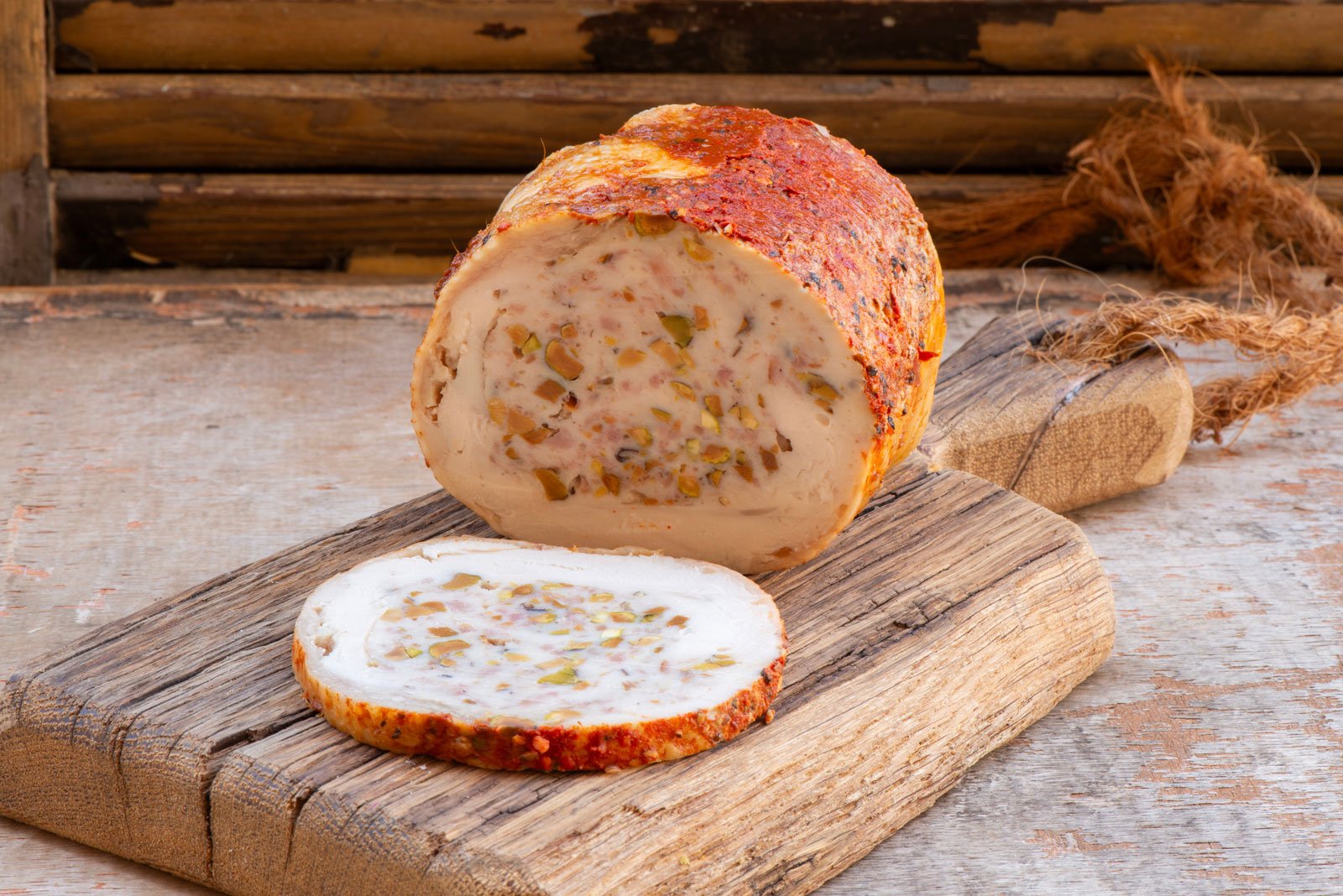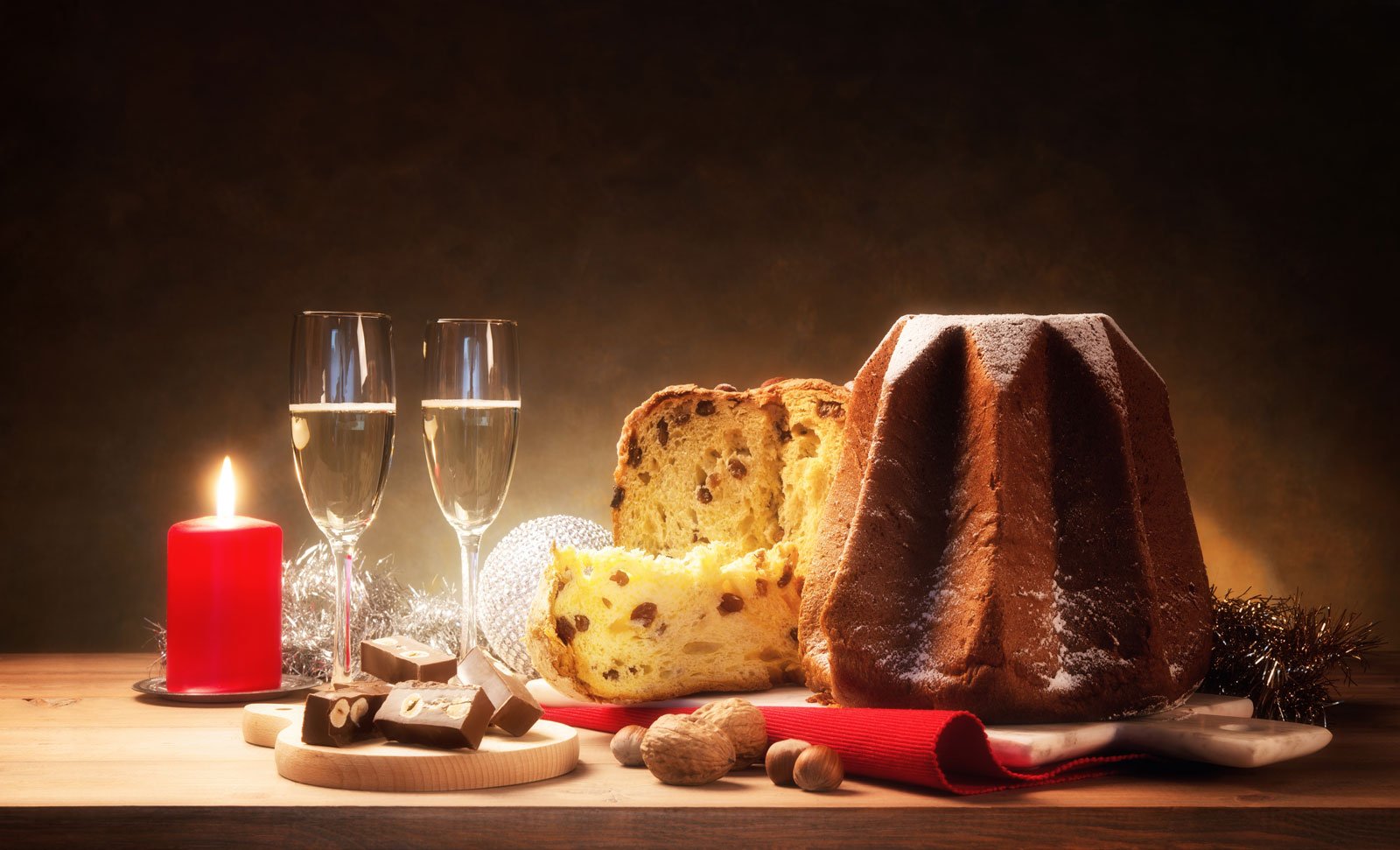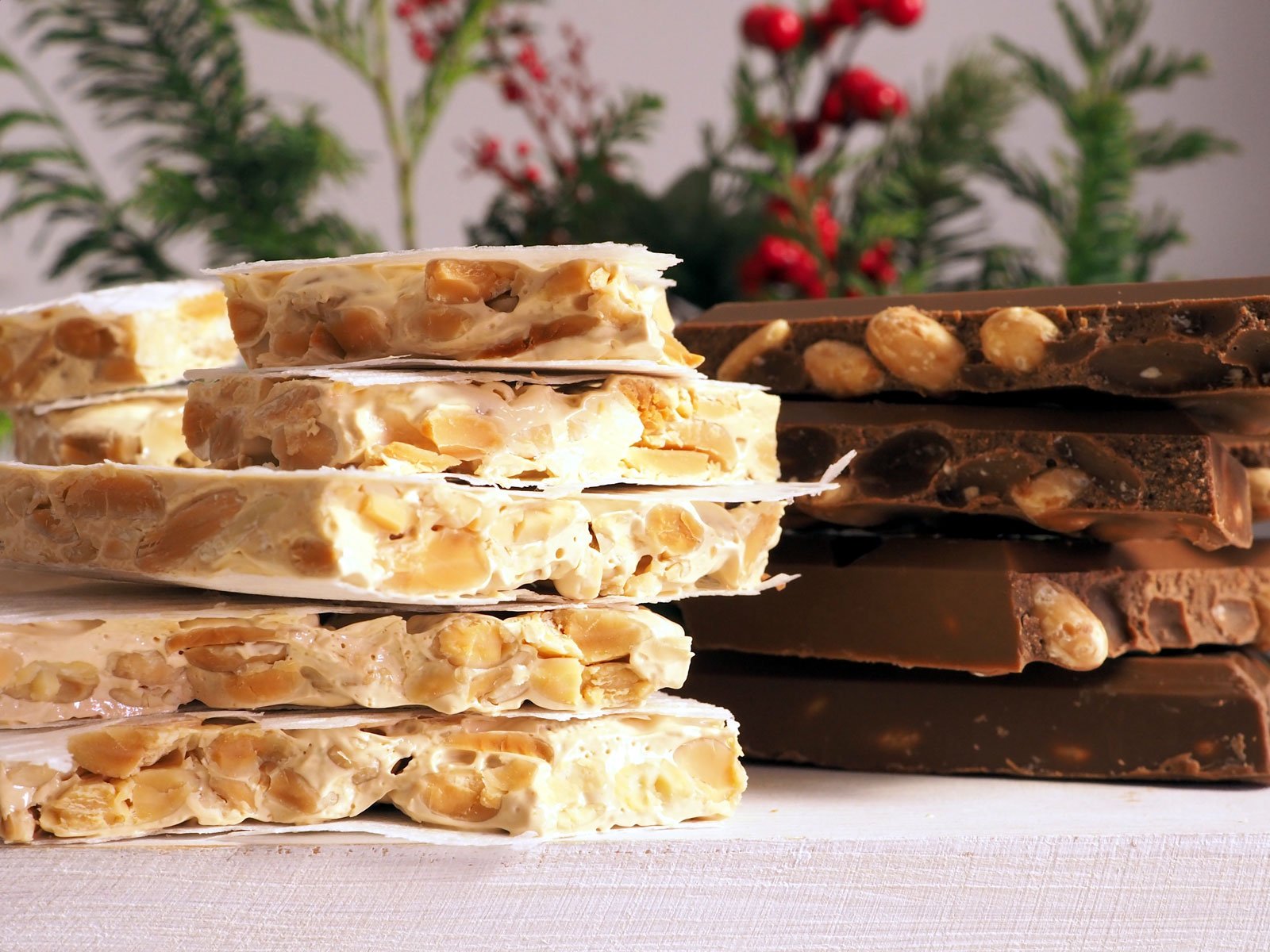A Tuscan Christmas Feast
By Freya Middleton
What will be on the table in Tuscany on Christmas day?
Here is a pretty typical menu for this region: to start with, a big plate of mixed crostini (little slices of bread with differing spreads). The most common of the crostini are the crostini toscani. So standard is the chicken liver and rabbit spleen paté on a Tuscan table, anytime of the year, that this type is called the Tuscan crostino. There may also be, to accompany it, tomato bruschetta, a tuna paté-spread crostino, or maybe a mushroom crostino. This can also be accompanied with a plate of mixed salumi (prosciutto, salami) andor some sliced chicken galantine.
Now that your appetite is warmed up!
Here comes the secondo (main dish), which is traditionally a bollito misto (mixed boiled meats) and/or zampone. In the mixed boiled meats there could be tongue, capon (castrated rooster) or chicken, turkey, lean beef and cotechino (a rich sausage typically from Mantua).
The salsa verde is a must with the bollito misto. This is a tasty sauce made from bread soaked in vinegar until it becomes almost like breadcrumbs, mixed with finely chopped parsley, garlic and lots of good Tuscan olive oil. Finely chopped anchovies and the yolk of a hard boiled egg are also often added.
Zampone
The zampone is scenographic - I always love seeing the whole pig’s trotter stuffed with meat on the table. Like the cotecchino, the zampone is typical of Mantova, but is a favourite in all Italy around Christmas time and is also eaten on New Year’s Eve with lentils. It too is a rich sausage, however the mixed pork meat (cheek, head, throat, shoulder), combined with spices and herbs, is stuffed into the skin of a pig’s trotter. The zampone is thought to date to the beginning of the 1500’s in a town called Mirandola, in the Romagna area north of Tuscany. The town, under siege by the troops of Pope Julius II, had all the pigs killed so that the troops wouldn’t be able to use them, and so they minced the meat and stored it inside the trotters in the hope that it would be better preserved.
PanetTone
For dessert, the panettone is a must. Originally from Milan, the panettone dates to the Renaissance, although there are differing stories as to its creation and the origin of its name. One story is that this traditional Christmas cake dates to 1495, when the head cook of Ludovico il Moro, Duke of Milan, having to many things to organise for the sumptuous Christmas dinner for the duke and his guests, burnt the cake that was intended for dessert. A kitchen hand called Toni had made a cake that morning, using the remains of the ingredients of all the other meal’s dishes: flour, butter, egg, lime peel and some raisins. Toni presented his creation to the cook, who in desperation took the strange cake, shaped like a large bread loaf, to the duke’s table. When it proved a huge success, all the guests wanted to know its name… to which the chef replied that it was ‘Toni’s bread’ or ‘pan di Toni’. Over time, this morphed into panettone.
Another explanation for the origin of panettone is documented by Count Pietro Verri, who described the ceremony of the breaking of bread that both rich and poor families would perform at Christmas time. The cerimonia del Ceppo would be when the whole family would gather together and the head of the family would break a loaf of bread into pieces, enough for each member, so that all would share from the same loaf and thus symbolise the strong family ties that bind all together. The poor man’s bread was made from millet (pane di miglio, called pan de mej), and the bread of the wealthy and nobility was white bread (called micca). It was decided however that on Christmas day everybody should use the same bread in the cerimonia del Ceppo, as a symbol of equality and togetherness. This bread, made from butter, pure flour and sugar, was called the pan de’ sciori or pan de ton, meaning the ‘luxury bread’. In 1919, the Milanese company Motta produced the first industrial panettone.
Alternatives (or in addition) to panettone
The rival to the panettone on the Italian Christmas table is the pandoro. Originally from Verona, the pandoro doesn’t have candied fruit and it too has now taken on a national status. It is tall and cone-shaped and, rather than a point at the top, has a narrower flat form in the shape of a star, typically eight-sided. There is often a packet of icing sugar that comes with both the pandoro and the panettone, which is emptied into the plastic covering of the cake just before eating, and, with the cake still inside, is shaken so that the icing sugar covers the entire surface.
Another national must in this period is the torrone, which is a nougat made from honey, sugar, egg whites and toasted almonds. The name could be from the Latin torrere (to toast), referring to the almonds, hazelnuts and pistachio. A speciality of Lombardy’s Cremona, it comes in two forms – soft and chewy, and hard and brittle – and is eaten all over Italy. A possible origin also dates to the fifteenth century, when it was served on the occasion of the marriage between Francesco Sforza and Bianca Maria Visconti in 1441.
And also biscuits to finish
Two types of biscuits, typically from Siena, are eaten all over the region at Christmas time: ricciarelli, soft almond paste biscuits typically shaped like a leaf (ingredients: peeled almonds, sugar, icing sugar, egg yolks) and cavallucci (flour, sugar, walnuts, aniseed, honey, cinnamon, and sometimes candied orange ). The latter’s original name is berriguocoli and by 1515 they were documented already as the sweet distributed by the town council to its members during the festive season. The biscuits take on their current name due to the cavallai, the grooms at various staging posts, who travelled with these sweets due to their easily transportable nature and long conservation period.
Typically, Italians celebrate Christmas lunch rather than dinner. The meal is accompanied with red wine and rounded off with some sweet dessert wine. Many Italians are back in business for a feast the following day, Boxing Day, known in Italy as 'Santo Stefano' or St Stephen’s Day. There is no rest for the wicked.
Buon appetito!
This article republished with kind permission of Freya’s Florence











